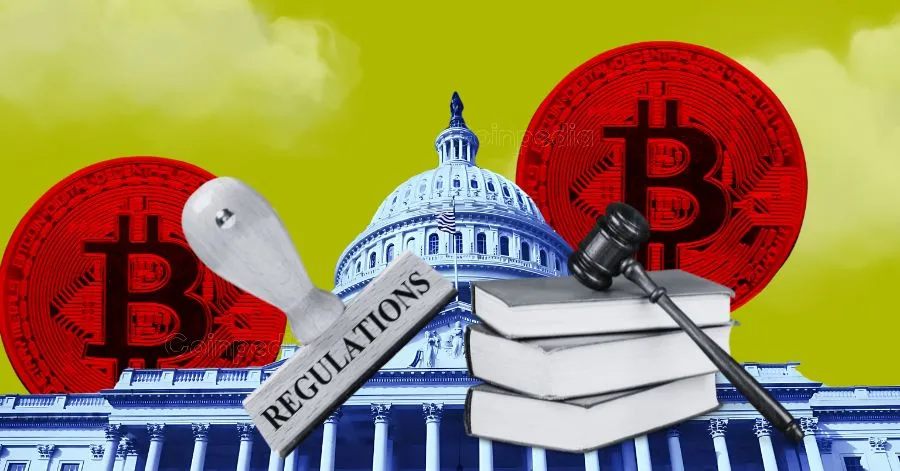
The recent unveiling of the Digital Asset Market Clarity Act, or CLARITY Act, marks a watershed moment in the evolution of U.S. cryptocurrency legislation. After years of regulatory ambiguity and legal contention, this bipartisan-supported bill — strongly championed by industry voices such as Stuart Alderoty, Ripple’s Chief Legal Officer — aims to cut through the fog by establishing a coherent and unified framework governing digital assets. This legislative move signals a significant step toward reconciling innovation with investor protections and consistent application of the law.
Tackling Regulatory Ambiguity with Clear Rules
At the heart of the CLARITY Act is its response to the longstanding “grey zone” problem in crypto regulation. Historically, digital currencies and tokens have been ensnared in overlapping jurisdictional claims by agencies like the SEC and CFTC, each applying their own sometimes conflicting rules. This fractured oversight has resulted in uncertainty that stifled growth and prompted protracted legal battles—Ripple’s lawsuit with the SEC being the poster child for such dysfunction. The Act proposes a clarified legal definition for digital tokens and introduces “safe harbor” provisions to protect new projects from immediate regulatory penalties, as long as certain thresholds are met.
This move is less about handcuffing innovation and more about deploying a reliable legal compass. By standardizing definitions and criteria, the Act reduces litigation risk and promotes a predictable environment, encouraging investors and developers to engage confidently without fearing sudden regulatory reclassifications. For a market often described as the Wild West, the CLARITY Act intends to be the sheriff laying down clear boundaries.
A Four-Year Safe Harbor: Innovation’s Breathing Room
One of the most praised provisions, especially by Ripple’s Alderoty, is the four-year safe harbor for primary token offerings. Essentially, this grants startups and blockchain projects a regulatory grace period provided their networks reach what the Act terms a “mature blockchain system” status, and their fundraising remains under the $75 million cap in any 12-month period. Such a buffer is a game changer — instead of forcing fledgling ventures to immediately navigate the complex and costly maze of securities law compliance, they gain valuable time and space to build and prove their networks.
This balance is delicate yet crucial. On the one hand, investor safeguards are maintained through fundraising limits and maturity standards; on the other, innovators gain a runway free from crippling legal overhead. This approach reflects a savvy understanding: blockchain technology is still in flux, and premature regulatory clampdowns could smother its growth. Thanks to this safe harbor, the CLARITY Act bridges the gap between regulation and technology’s rapid pace, potentially fueling a flourishing U.S. digital asset ecosystem.
Bipartisan Political Momentum and Industry Optimism
What sets the CLARITY Act apart is the broad political collaboration behind it. Lawmakers from both sides of the aisle — including figures like French Hill, Angie Craig, and Dusty Johnson — have banded together, signaling an uncommon consensus on the necessity of crypto regulation that supports innovation without sacrificing consumer protection. This cross-party coalition reflects a maturation in the political approach to digital finance, moving beyond partisan gridlocks into pragmatic policymaking.
Stuart Alderoty encapsulates this sentiment, noting that regulatory clarity “should not be controversial” and that the bill aligns America with a “smart, workable framework.” This spirit is further buoyed by positive regulatory shifts such as the SEC dropping its appeal against Ripple and the strategic appointment of a White House Cryptocurrency Czar, believed to foster better industry-government dialogue. Together, these developments lay the groundwork for a regulatory environment that balances oversight with opportunity.
Broader Implications for the Crypto Market
Should the CLARITY Act pass into law, its impact on the crypto market could be profound. A standardized U.S. regulatory framework would likely boost investor confidence, encouraging more institutional and retail participation. It can help domestic players like Ripple compete on equal footing with international entities benefitting from clearer rules in other jurisdictions. The positive market response seen with XRP following favorable regulatory news illustrates the tangible economic uplift that legislative clarity can precipitate.
Moreover, consistent regulation may reduce fragmented legal battles that drain resources and create risks, thereby fostering a healthier, more sustainable industry. In an ecosystem where speed and trust are paramount, legal certainty is a vital ingredient for long-term success.
Remaining Hurdles and the Road Ahead
Despite these promising developments, challenges remain. The CLARITY Act still faces a gauntlet of legislative scrutiny, with debates over specific provisions likely to continue. Balancing flexibility to accommodate technological evolution against the need for robust consumer protections is a complex task regulators must navigate carefully. Additionally, harmonious cooperation among various regulatory bodies must be maintained to avoid resurrecting the overlapping jurisdiction issues that the bill aims to resolve.
Nevertheless, the bill’s passage would be a milestone, signaling a new chapter in U.S. digital asset policy — one that embraces innovation through clear, consistent rules without compromising market integrity.
In sum, the CLARITY Act serves as a necessary course correction in the rocky terrain of cryptocurrency regulation. It offers a path out of confusion and fragmentation, guided by bipartisan political will and industry backing. With provisions such as the four-year safe harbor and a unified regulatory framework, it promises to protect investors while nurturing innovation. If successful, this legislation will not only reaffirm the United States’ position as a leader in digital finance but could also ignite sustainable growth and confidence across the cryptocurrency market. Pow—time to pop the regulatory bubble and step into a clearer future.







